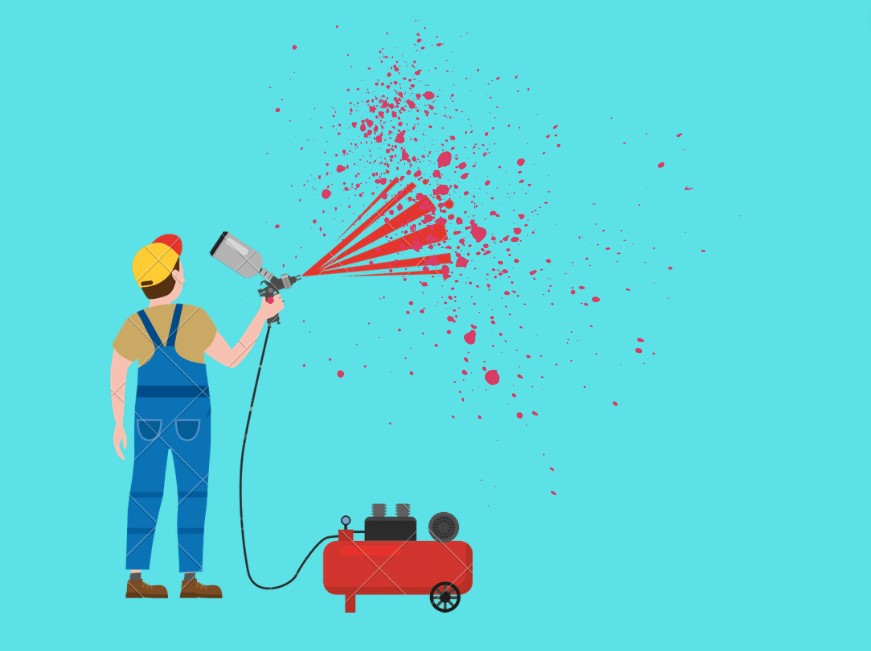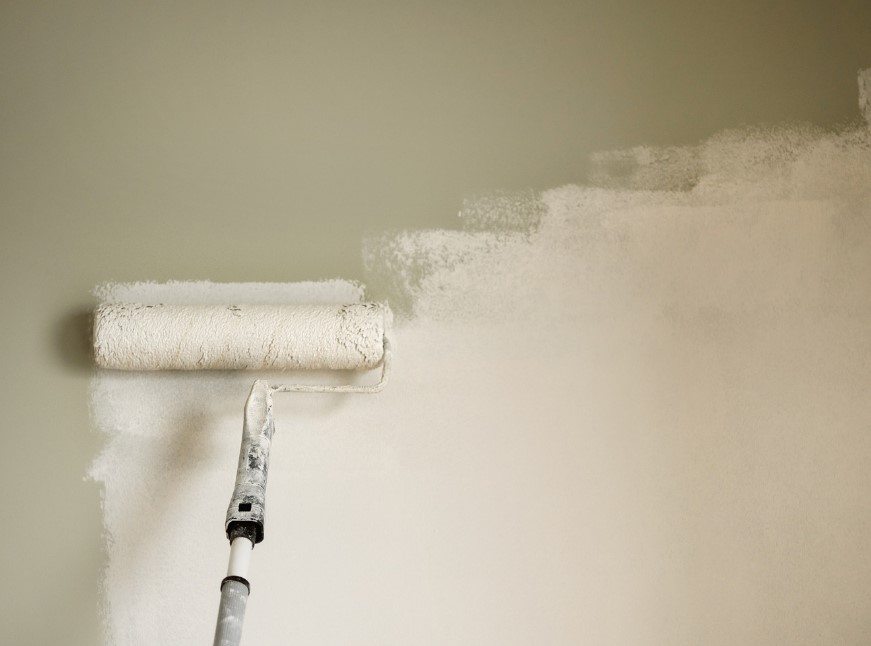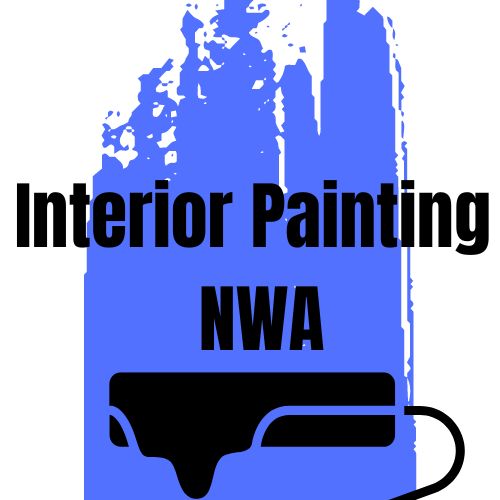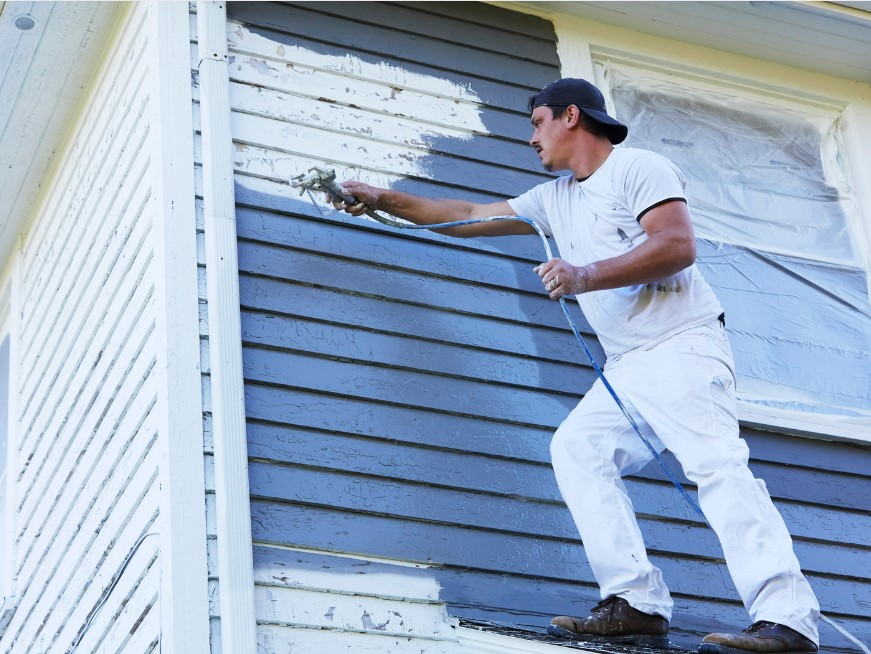The Choice: Rolling Paint on Walls vs. Spray Painting
Two primary methods are commonly employed when painting walls: rolling paint and spray painting. Both techniques have their merits and drawbacks, and selecting the right approach can significantly impact the efficiency and outcome of your project.
This blog will explore the pros and cons of rolling and spray painting, empowering you to decide based on your specific requirements. Whether you value simplicity and accessibility or prioritize speed and a professional finish, understanding these methods will guide you toward achieving the desired results.
Rolling Paint on Walls: Simplicity and Versatility
Rolling paint on walls has long been the go-to method for homeowners and DIY enthusiasts. One of its main advantages lies in its simplicity and accessibility. Unlike spray painting, rolling paint does not require specialized equipment or extensive knowledge. Anyone can easily pick up a paint roller, load it with paint, and apply it to the walls.
Rolling paint offers versatility in terms of paint application. It allows for controlled and precise coverage, making it ideal for smaller spaces, intricate details, and areas that require more attention. With a paint roller, you can easily maneuver around corners, trim, and other obstacles, ensuring thorough coverage and a smooth finish.
Also, it’s essential to acknowledge that rolling paint on walls can be time-consuming.
Since the application process is manual, it requires patience and attention to detail. You may need to spend additional time cutting in edges and corners with a brush before using the roller, adding to the overall time investment. If you have ample space to paint, be prepared for a potentially lengthy process.
Read More
Spray Painting: Speed and Efficiency

In contrast to rolling paint, spray paint offers unparalleled speed and efficiency. With the right equipment, you can cover large areas in a fraction of the time it would take using a roller. It’s possible to spray paint an entire house within a day, significantly reducing the project timeline.
The quick and efficient nature of spray painting is particularly advantageous for larger projects or commercial spaces. It allows for rapid coverage, evenly distributing paint across surfaces and achieving a professional finish. Spray painting can also be highly effective on textured walls or surfaces with intricate designs, where a roller may struggle to reach all the crevices.
However, it’s essential to consider the significant prep work involved in spray painting.
Unlike rolling paint, spray painting requires thorough preparation to protect surrounding areas. Since paint particles are dispersed into the air, it’s crucial to cover and mask everything in the vicinity, including floors, furniture, fixtures, and belongings. Additionally, proper ventilation is essential to ensure a safe and healthy working environment. Adequate airflow helps disperse fumes and prevents the accumulation of paint particles in the air.
Another factor to consider with spray painting is the required learning curve and skill level.
Achieving an even and consistent finish demands practice and experience. Improper technique can result in overspray, drips, or uneven coverage. If you opt for spray painting, consider familiarizing yourself with the equipment and processes through research or seeking professional guidance.
Read More
Choosing the Right Method for Your Project

When deciding between rolling paint and spray paint, several factors should be considered:
- Project size: If you’re working on a small room or area, rolling paint may be a practical choice due to its simplicity and precision. For larger projects, spray painting can save significant time.
- Time constraints: If time is of the essence, and you must complete the project quickly, spray painting can be a game-changer. However, if time is not a limiting factor and you enjoy the process, rolling paint can be a satisfying and rewarding method.
- Surface type and condition: Consider the texture and condition of the surfaces you plan to paint. Rolling paint is more forgiving on uneven or rough surfaces, while spray painting may yield better results on smoother surfaces.
- Skill level and experience: Assess your comfort level and experience with painting techniques. Rolling paint is generally more accessible to beginners, while spray painting requires more practice and familiarity with the equipment.
- Environmental considerations: If ventilation or air quality is a concern, rolling paint may be a safer option. Spray painting necessitates proper ventilation and preventive measures to ensure a healthy working environment.
Read more.
Rolling vs Spray painting.
The choice between rolling paint on walls and spray painting depends on various factors, including the project size, time constraints, surface conditions, skill level, and environmental considerations. Both methods have merits and drawbacks, and understanding your specific requirements will help you make an informed decision. Remember, whether you choose the simplicity of rolling paint or the efficiency of spray painting, thorough preparation, attention to detail, and a commitment to quality will ultimately lead to a successful paint job.
When it would be better to roll paint.
These are the situations it would be better to roll instead of spray painting.
Rolling paint can be done every where in your house.
For home owner’s that don’t have time to tape everything down in the house, rolling can be a great way to get it done.
Rolling paint can take a long time to do but will be a great way to paint the house if you are not familiar with how to use a spray paint gun.
- If you are in a painting a kitchen or bedroom and it requires a lot of tedious work around trim and cabinets.
- If you are painting a bedroom that is a unique layout.
- If you are painting extremely tight hallways.
- If you do not have time to spend a day taping and covering everything in your house.
When you can/ should spray paint.
Here are some situations that you can or should spray paint a painting project in your house.
Most of the time it is better to roll, but in these situations spray painting will give you a more even finish to your DIY paint project.
Also, its important to not over spray paint and to possibly run the paint roller over the area you spray paint as it will even it out.
- If you are painting kitchen or bathroom cabinets.
- If you are staining a fence.
- If you have rooms in an unfinished house that don’t require you to do much prep-work.
- If you are expert level spray painter and know how to paint without over spraying.
- If you are painting doors.
Which is Better: Rolling or Spray Painting?
When it comes to choosing between rolling or spray painting, the decision ultimately depends on your priorities and the specific requirements of your project. While spray painting offers speed and ease of use, rollers are known for delivering superior quality and a more even finish.
Speed and Ease of Use:
When it comes to efficiency, paint sprayers take the lead. They are the preferred choice for many professional painters due to their ability to cover large areas quickly. With a spray gun, you can achieve fast and even coverage, reducing the overall project time. It’s an excellent option for those who prioritize completing the job swiftly and efficiently.
Quality and Finish:
While speed is important, the quality of the paint job should not be overlooked. This is where the roller excels. Rollers provide a more even finish, allowing for better control and coverage. The rolling motion ensures that the paint is evenly distributed, resulting in a smoother and more uniform appearance on the walls. Additionally, rollers are known for creating a superior texture, enhancing the overall aesthetic of the painted surface. The paint adheres better to the walls when applied with a roller, ensuring a long-lasting and durable finish.
Considerations for Choosing:
When deciding between rolling and spray painting, it’s essential to consider the following factors:
- Project Size and Surface Area: If you have a large project or need to paint extensive surfaces, spray painting can save you a significant amount of time. It’s especially beneficial for painting larger rooms, exterior walls, or commercial spaces.
- Precision and Control: Rollers provide better precision and control, making them suitable for intricate areas, edges, and corners. If you need to paint detailed or complex surfaces, using a roller allows for more accurate application and better maneuverability.
- Surface Texture and Condition: The condition of the surface you’re painting can also influence your choice. Spray painting can be advantageous for smooth surfaces, as it can achieve an even coat without the risk of brush marks or roller texture. On the other hand, if the surface is uneven or has imperfections, rolling paint can help mask these irregularities and provide a smoother finish.
- Skill Level and Experience: Spray painting requires some skill and experience to achieve professional-looking results. If you’re a novice or inexperienced with painting techniques, using a roller may be more forgiving and easier to control. Rollers are generally considered more accessible for beginners.
- Cleanup and Overspray: Spray painting involves overspray, which can potentially affect nearby objects or surfaces. Proper precautions and extensive masking are necessary to protect the surrounding area. Rollers, on the other hand, generate less mess and are easier to clean up.
Read More.
The Drawbacks of Spray Painting:
Spray painting, while offering speed and efficiency, does come with its share of disadvantages to consider. Here are some key cons:
- Risk of Paint Runs and Premature Drying: One challenge with spray painting is the potential for paint to run off or dry too quickly, especially if not applied with precision. This can result in uneven coverage and unsightly drips, requiring additional touch-ups or even starting over.
- Difficulty in Avoiding Surface Contamination: Spray painting requires careful technique to prevent the contamination of surrounding surfaces. Overspray can inadvertently land on unintended areas, leading to a messy and time-consuming cleanup process. Proper masking and protective measures are crucial to avoid unwanted paint residue.
- Limited Protective Finish: Compared to brushed-on paint, spray painting may not provide as durable and long-lasting of a protective finish. The thin application of paint can make the surface more vulnerable to chipping, scratching, or wearing off over time, especially in high-traffic or exposed areas.
- Challenges with Removing Chrome Spray Paint: Removing chrome spray paint from chrome accessories can be particularly challenging. The adhesion of spray paint on chrome surfaces can be strong, making it difficult to remove without damaging the underlying material. Specialized techniques and products may be required to effectively strip off chrome spray paint.
While spray painting offers speed and convenience, it’s important to consider these potential drawbacks and weigh them against your specific project requirements. Careful preparation, technique, and the use of appropriate materials can help mitigate some of these issues and ensure a successful spray painting experience.
Conclusion.
No matter what job you are working on rolling or spray painting are 2 options to getting the job done.
Both require a certain skill set and prep work.
Rolling paint is better when you have the time or the job require extreme precision.
Spray painting is better if for doors, trim, cabinets and rooms that don’t require you to do much prep work if your in a rush.
Always make sure the room is well ventilated as paint can harm you.
Read More.

